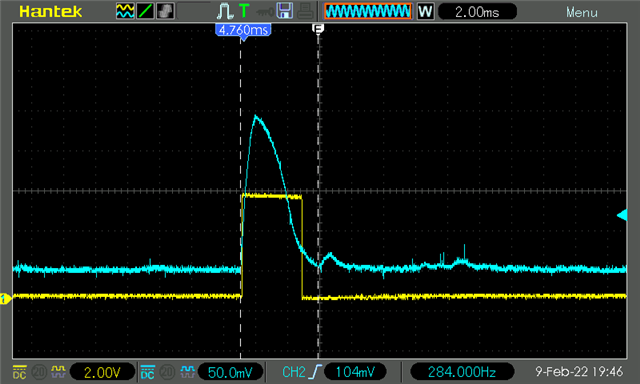I have a TUSS4470 based circuit being used with a transducer from Prowave -- running in direct drive mode.
I am clearly getting a readable echo signal on the ADC as I can see a signal register on the ADC waveform. However, the signal is quite weak and not as differentiated from ground even after tuning the LNA.
The following are the discretes in the circuit:
- C_INN: 0.1uF
- C_INP: 0.1uF
- R_INP: 330Ohms
I have tried a damping resistor as well to reduce the "ringing" time, but that does not help much in differentiating the echo, which is expected.
My register settings are:
| 0x10 | BPF_CONFIG_1 | 0x00 |
| 0x11 | BPF_CONFIG_2 | 0x00 |
| 0x12 | DEV_CTRL_1 | 0x8F |
| 0x13 | DEV_CTRL_2 | 0xC6 |
| 0x14 | DEV_CTRL_3 | 0x00 |
| 0x16 | VDRV_CTRL | 0x4F |
| 0x17 | ECHO_INT_CONFIG | 0x10 |
| 0x18 | ZC_CONFIG | 0x14 |
| 0x1A | BURST_PULSE | 0x04 |
| 0x1B | TOF_CONFIG | 0x01 |
I have tired adding a damping resistor between the two leads of the transducer, but need 4.7k to help reduce the ringing time. As you can perhaps see from the scope capture below, the signal from a rather large target is barely registering at some 35mW after the LNA. What could I be doing wrong in the LNA settings?

Thanks in advance for your help



